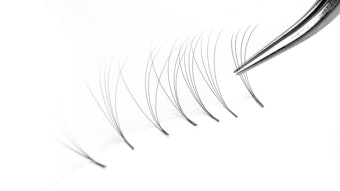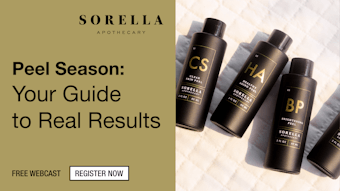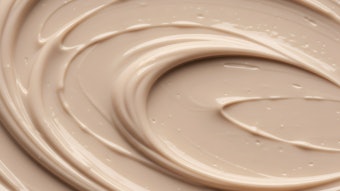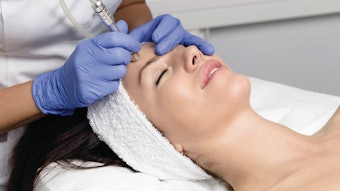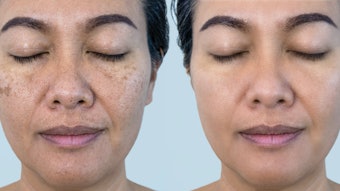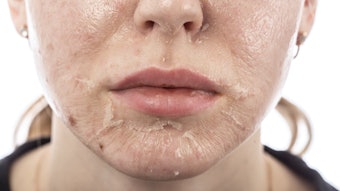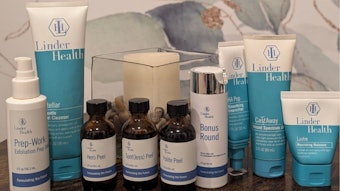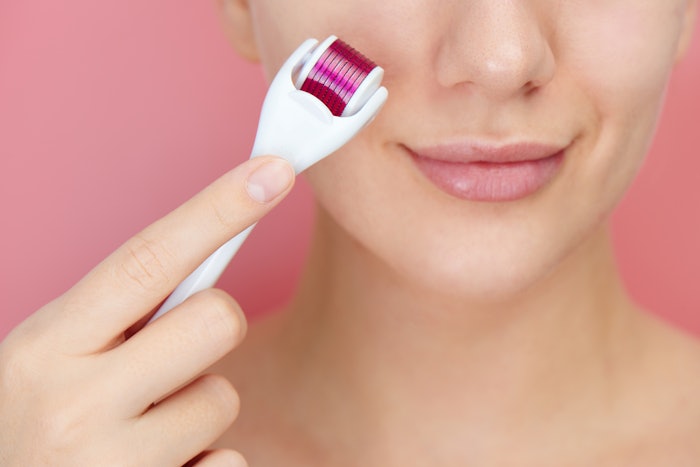
Have you heard the term "collagen banking" in your spa space or perhaps on social media? This term has exploded in the past year, as a way to describe the process of amping up collagen production to ensure you have more of it later. So, let's dive deeper into where the term collagen banking came from, if collagen banking is helpful in slowing the signs of age and what services and products help us bank collagen.
The Origin Of Collagen Banking
We all know what collagen is, but it is an essential protein in the body that also happens to be one of the most important components for firm, plump skin. It helps to support skin's structure and without it, wrinkles and sagging occur. The problem? The body's production of collagen starts to slow at 25, when we start to lose 1% of collagen yearly as part of natural aging.
However, lifestyle choices such as sun exposure and smoking can also deplete collagen, leading experts to wonder if there was anything we could do proactively to reduce the amount of collagen we lose and slow the signs of age. Enter collagen banking. A number of dermatologists started using the term as a way to encourage clients to start producing more collagen early, so that when their body's collagen naturally decreases, the effect is more manageable.
Does Collagen Banking Work?
Though most experts agree that any effort to produce more collagen is worth it, some add that the term collagen banking is a sales strategy. Nevertheless, many aesthetic doctors and skin care professionals agree that preemptively producing more collagen before production slows can help the client age slower and manage aging well. It also gets the client into good skin care habits that if maintained, can lead to long-lasting results.
The question is, can collagen banking be done by clients who are 30+, and the answers seem mixed. Can older clients call it collagen banking if they are not indeed banking collagen before production slows? Are they banking it, or are they merely stimulating collagen production to counteract a reduced natural production? Whatever we call it, stimulating the production of collagen is always a good thing, so let's look into some ways that we can produce and protect it for healthy, firm skin.
How-To: Collagen Bank
Collagen can be stimulated topically or manually with modalities. It can also be stimulated internally with supplements and let's not forget that protecting skin from collagen degradation is at utmost importance.
Topically: There are a myriad of ingredients in topical skin care shown to stimulate the production of collagen. A gold star would probably go to forms of retinol, though vitamin C, AHAs, peptides and niacinamide are all great collagen stimulators, among many others. These products should be applied regularly in home care as well as incorporated into advanced skin care treatments such as peels and masks.
Manually: Modalities in the treatment room and for home use can assist in the production of collagen, whether the client is banking it or not. Examples include microneedling, LED therapy, ultrasound and many more. Just make sure any device sent home with the client comes with detailed instructions for use.
Nutrition: Nutrition plays a big part in the production of collagen. Foods rich in collagen can be consumed, with one of the highest being chicken. Others include bone broth, certain types of fish and eggs. You can also consume foods that help the body produce collagen, such as those that contain high amounts of vitamin C. Though there are a number of collagen supplements, drinks, teas, etc. on the market, some nutritionists suggest that this type of collagen may not be as bioavailable as others.
Protection: Though this isn't a collagen production method, it is important to protect the collagen in the skin from degrading any further. This includes the application of topical antioxidants to prevent free radical damage as well as the regular wear of SPF to prevent UV degradation.


